Chandrayaan-3, Aditya-L1, Gaganyaan – ISRO’s Accomplishments In 2023
[ad_1]
ISRO Accomplishments In 2023: The year 2023 was a landmark one for the Indian Space Research Organisation (ISRO) because it accomplished huge milestones – from becoming the first country to reach the Moon’s south pole to sending a spacecraft to study the Sun. Chandrayaan-3 was a record-setting mission because the successful soft landing of the spacecraft on the Moon’s south pole made India the first country to achieve this feat. Less than a fortnight after Chandrayaan’s Vikram lander soft-landed on the Moon, ISRO launched Aditya-L1, India’s first space-based solar observatory.
In October, ISRO successfully completed the first mission of the first leg of Gaganyaan, India’s human spaceflight programme.
The following is the list of accomplishments made by ISRO in 2023.
ISRO-Microsoft Collaboration
On January 5, 2023, ISRO and Microsoft signed a Memorandum of Understanding (MoU) to fuel the growth of Indian space-tech startups and empower them with technology tools and platforms, mentoring and go-to-market support. This will help them scale-up and become enterprise-ready.
The aim of the collaboration is to strengthen ISRO’s vision of harnessing the market potential of the most promising space-tech innovators and entrepreneurs in India, according to a statement released by Microsoft.
SSLV-D2
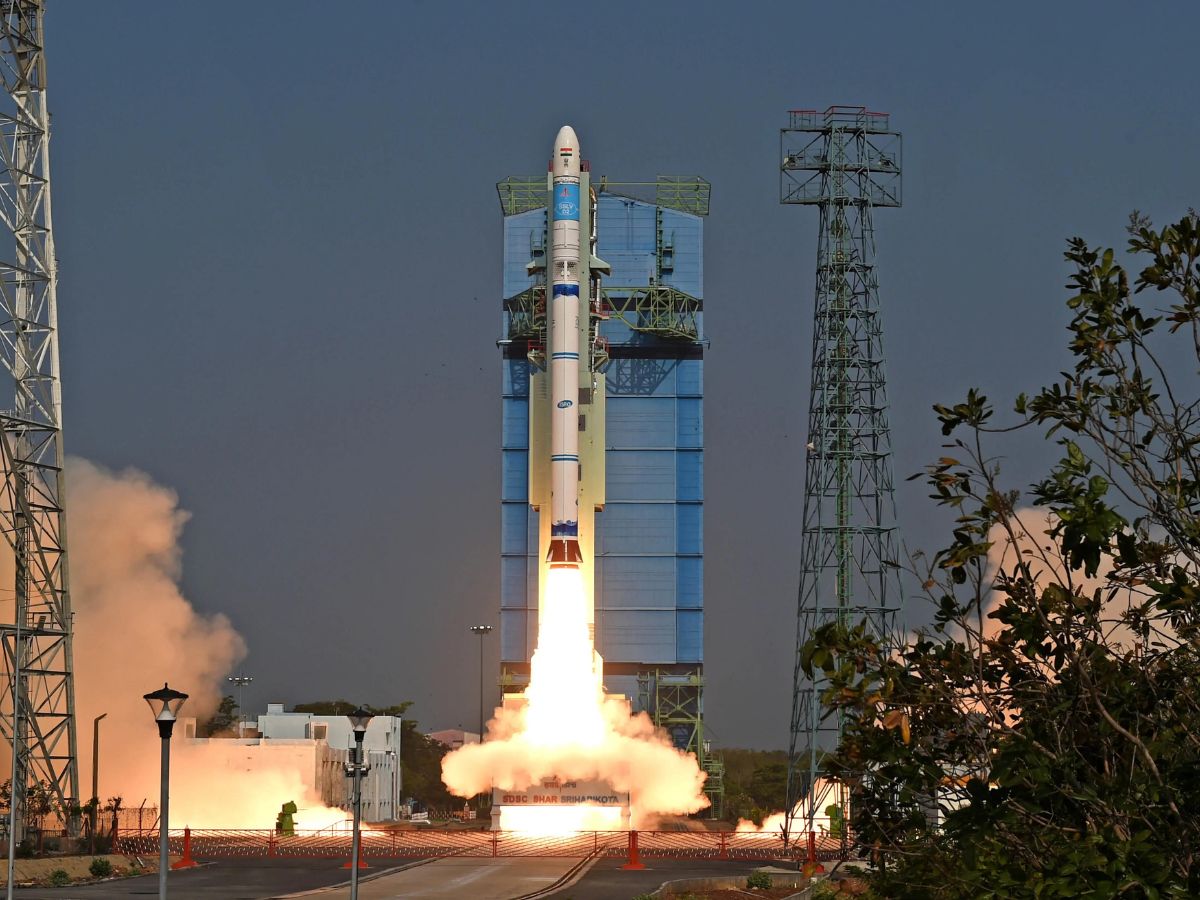
ISRO launched the second developmental flight of the Small Satellite Launch Vehicle (SSLV) on February 10, 2023, at 9:18 am IST. SSLV is ISRO’s smallest launch vehicle. The mission, called SSLV-D2, or EOS-07, was launched from the First Launch Pad, Satish Dhawan Space Centre, Sriharikota, Andhra Pradesh.
The maiden mission of SSLV, which was launched on August 7, 2022, had failed to place its payloads into the intended orbit.
SSLV-D1, the first developmental flight of SSLV, was supposed to place two satellites into a 356-kilometre circular orbit. However, the satellites were instead placed into a 356 km × 76 km elliptical orbit. ISRO said that the issue was reasonably identified, and that the “failure of a logic to identify a sensor failure and go for a salvage action caused the deviation”.
SSLV-D2 was a 15-minute flight, and placed satellites EOS-07 (Earth Observation Satellite-07), Janus-1 and AzaadiSAT-2 into a 450-kilometre orbit.
Over the years, ISRO has successfully realised five generations of launch vehicles, namely Satellite Launch Vehicle-3 (SLV-3), Augmented Satellite Launch Vehicle (ASLV), Polar Satellite Launch Vehicle (PSLV), Geosynchronous Satellite Launch Vehicle (GSLV), and GSLV Mark III. These launch vehicles have catered to national developmental needs, and enabled ISRO to develop and master critical technologies related to solid, liquid and cryogenic propulsion systems.
ISRO developed SSLV to cater to the emerging global small satellite launch services market. SSLV has the capability to launch on demand.
RLV LEX
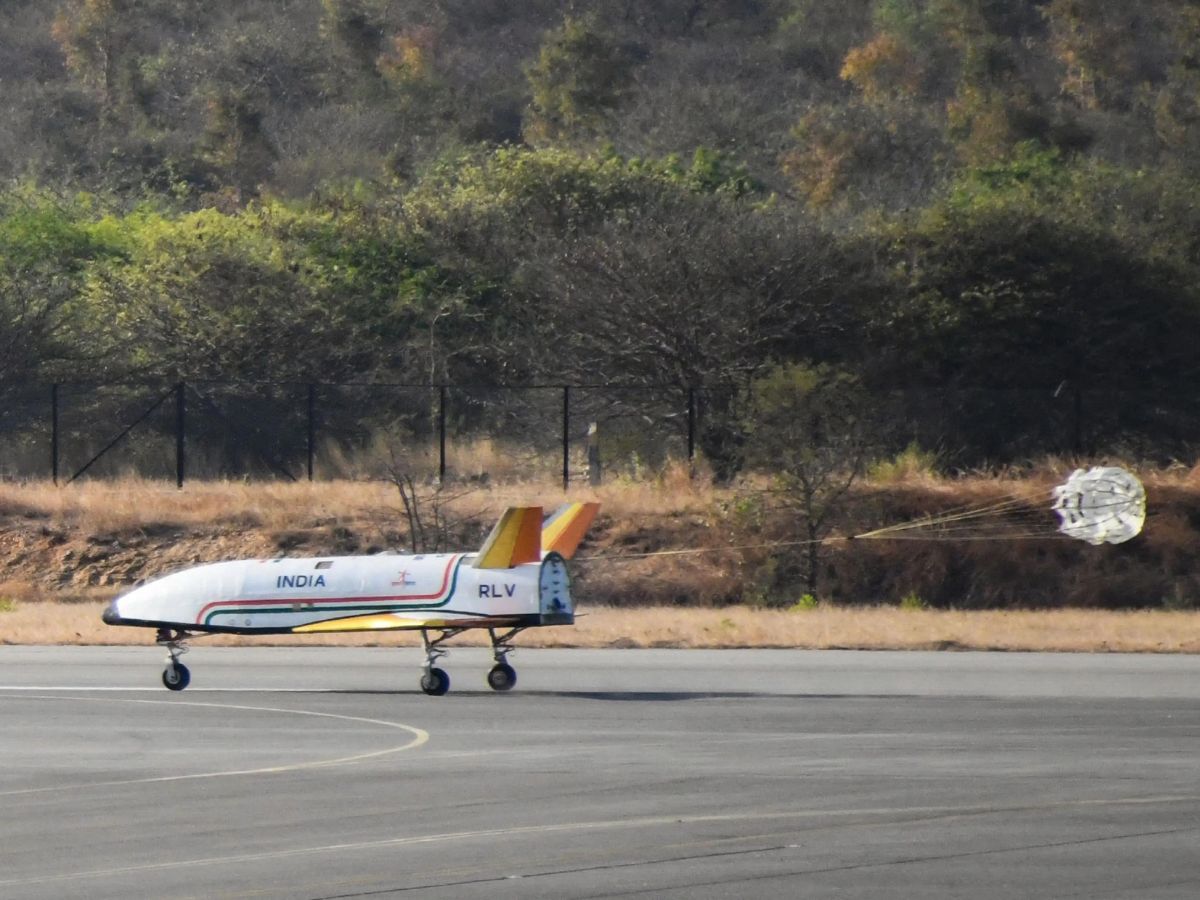
On April 2, ISRO successfully conducted the autonomous landing test or air-drop landing experiment of the space agency’s reusable launch vehicle prototype. The mission, called RLV LEX, was performed in collaboration with the Defence Space Research Organisation (DRDO), and the Indian Air Force (IAF), in the early hours of the day at the Aeronautical Test Range (ATR), Chitradurga, Karnataka.
The mission marked the first time a winged body was carried to an altitude of 4.5 kilometres by a helicopter and released for carrying out an autonomous landing on a runway.
ISRO conducted the first experimental mission of its Reusable Launch Vehicle – Technology Demonstrator (RLV-TD) on May 23, 2016, from Satish Dhawan Space Centre, Sriharikota. As part of this experimental mission, critical technologies such as autonomous navigation, guidance and control, and the reusable thermal protection system were successfully demonstrated.
One of the critical technologies that ISRO had to demonstrate was the approach and autonomous landing of the reusable launch vehicle prototype on a runway. The Indian space agency accomplished this milestone as part of the RLV-LEX mission. This was the second phase of the technology demonstration mission for the reusable launch vehicle prototype.
For the mission, the RLV-TD was carried at 7:10 am IST by a Chinook Helicopter of the Indian Air Force, as an underslung load. The RLV-TD flew to a height of 4.5 kilometres above mean sea level.
Once the predetermined parameters were attained, the RLV-TD was released mid-air. The release conditions included 10 parameters, such as position, velocity, altitude and body rates, among others.
RLV-TD was released autonomously. After being released, it performed approach and landing manoeuvres using its Integrated Navigation, Guidance and Control System.
RLV-TD completed an autonomous landing on the ATR air strip at 7:40 am IST. With this, ISRO successfully achieved the autonomous landing of a space vehicle.
The autonomous landing of RLV-TD was carried out under the exact conditions required for the landing of a space vehicle that has re-entered the atmosphere.
Conditions were simulated in a way such that the vehicle’s speed was the same as what it would have had while arriving from space.
Landing parameters such as ground relative velocity, the sinking rate of landing gears, and precise body rates, which are likely to be experienced by an orbital re-entry space vehicle in its return path, were also taken into consideration.
The vehicle exhibited a high-speed autonomous landing at 350 kilometres per hour.
PSLV-C55

ISRO launched two Singaporean satellites on April 22, 2023, as part of the PSLV-C55 mission. PSLV-C55 launched TeLEOS-2 as the primary satellite, and hence, the mission is known as the TeLEOS-2 mission.
A polar satellite launch vehicle (PSLV) launched TeLEOS-2 and another satellite called Lumelite-4 at 14:19 IST from Satish Dhawan Space Center, Sriharikota.
Lumelite-4 was launched as a co-passenger satellite. Both TeLEOS-2 and Lumelite-4, which weigh 741 kilograms and 16 kilograms respectively, belong to Singapore, and have been placed into an eastward low-inclination orbit.
GSLV-F12

ISRO launched India’s first second-generation satellite on May 29, 2023. The satellite, called NVS-01, was launched atop ISRO’s Geosynchronous Satellite Launch Vehicle (GSLV) at 10:42 am IST, from the Second Launch Pad, Satish Dhawan Space Centre, Sriharikota. The launch vehicle used for this mission is called GSLV-F12.
NVS-01 is a navigation satellite and will be a part of the Navigation with Indian Constellation (NaVIC) services. The satellite weighs about 2,232 kilograms, and is equipped with an indigenous atomic clock.
NVS-01 was injected precisely into a Geosynchronous Transfer Orbit after a flight of about 19 minutes.
Chandrayaan-3
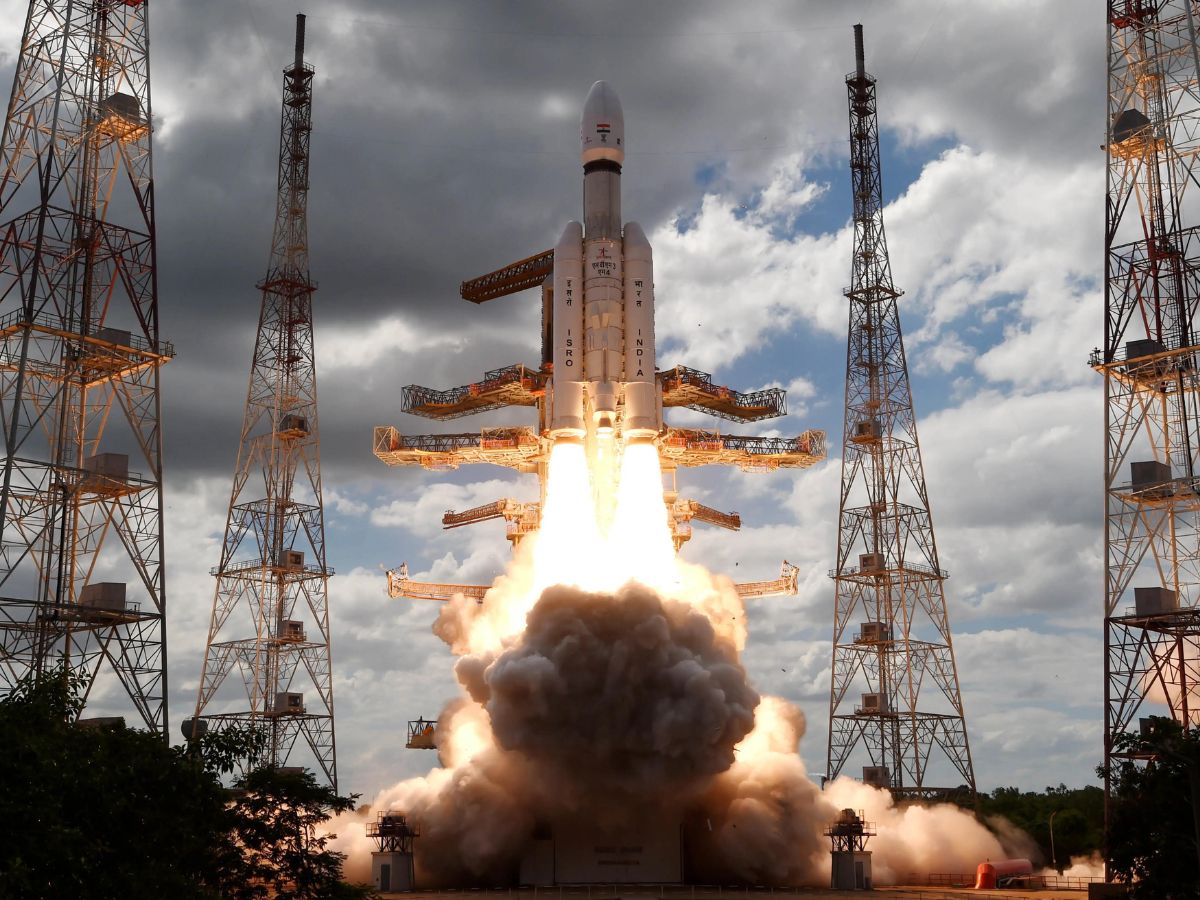
ISRO launched its third lunar exploration mission, Chandrayaan-3, on July 14, 2023, at 2:35 pm IST. The Chandrayaan-3 spacecraft’s voyage towards the Moon began after ISRO’s largest and heaviest rocket, LV3, carried the mission from Satish Dhawan Space Centre, Sriharikota, Andhra Pradesh.
Chandrayaan-3 successfully soft-landed on the Moon’s south pole on August 23. India became the first country to softly land a spacecraft on the lunar south pole, and the fourth country to achieve a soft landing on the Moon, after the United States, the Soviet Union, and China. Most lunar missions attempt landings on the lunar south pole because the region is a treasure trove of scientific secrets and cosmic mysteries.
Since the lunar south pole is similar to Earth’s diversity, exploring it allows scientists to obtain insights into how the Earth was billions of years ago, and if it will be possible to colonise the Moon in the future.
It is believed that water-ice reserves are buried beneath the lunar surface, especially below the poles, which is another reason space agencies are keen to explore the polar regions. Chandrayaan-1’s Moon Impact Probe hinted at the presence of water molecules below the Moon’s crust. Therefore, space research organisations intended to delve deeper into this discovery by sending spacecraft to the lunar poles, and conducting experiments on the lunar surface.
The lunar poles are quite dark, have unique topography and geology, and harbour conditions favourable for the preservation of water molecules in the form of ice. Several remote observations have been performed, most of which have hinted at the possibility of water-ice reserves being preserved beneath the Moon’s surface.
A soft landing on the lunar south pole allows the spacecraft to perform experiments on the ice and explore how these reserves could be used to extract water, oxygen and fuel for future crewed missions to the Moon.
Vikram and Pragyan made groundbreaking scientific discoveries and performed breakthrough experiments in just a week of starting operations on the Moon.
The Vikram lander was equipped with four payloads: Chandra’s Surface Thermophysical Experiment (ChaSTE), Instrument for Lunar Seismic Activity (ILSA), Radio Anatomy of Moon Bound Hypersensitive ionosphere and Atmosphere-Langmuir Probe (RAMBHA-LP), and Laser Retroreflector Array (LRA). The LRA, developed by NASA, was the only instrument onboard Chandrayaan-3 that is not indigenously developed.
The two payloads onboard Pragyan were: Alpha Particle X-ray Spectrometer (APXS) and Laser Induced Breakdown Spectroscope (LIBS). Both APXS and LIBS discovered the presence of sulphur on the Moon.
From creating the first temperature-depth profile on the Moon’s south pole, to confirming the presence of sulphur on the lunar south pole, from discovering that the lunar plasma environment above the south pole is sparse, to detecting a potential lunar quake, the payloads onboard Vikram and Pragyan achieved several milestones in less than a week.
Vikram’s ChaSTE payload has generated the first temperature-depth profile of the lunar surface on the Moon’s south pole. In order to understand the thermal behaviour of the Moon’s surface, ChaSTE measured the temperature profile of the lunar topsoil around the south pole. ChaSTE’s temperature probe, which is capable of penetrating to a depth of 10 centimetres into the lunar surface, and is equipped with 10 individual temperature sensors, made measurements which generated the first temperature-depth profile of the lunar soil on the Moon’s south pole. The penetration mechanism of the temperature probe can be controlled. The probe recorded the variation of temperature with changing depth in the lunar surface and near-surface lunar regions.
Pragyan’s LIBS payload confirmed the presence of sulphur in the lunar surface region near the Moon’s south pole. The instrument performed the first-ever in-situ measurements on the Moon’s south pole, ISRO said on August 29. LIBS unambiguously confirmed the presence of sulphur on the Moon’s south pole. According to ISRO, instruments onboard orbiters sent to the Moon in the past could not have conducted these measurements.
Apart from sulphur, LIBS also detected elements such as aluminium, calcium, iron, chromium, titanium, manganese, silicon, and oxygen on the lunar south pole. The presence of these elements on the Moon’s south pole was expected.
APXS was the second Pragyan rover payload which confirmed the presence of sulphur on the Moon’s south pole. However, it used a technique different from that used by LIBS.
APXS also detected elements such as aluminium, silicon, calcium, and iron.
RAMBHA-LP conducted experiments on the Moon’s south pole which revealed that the plasma environment above the lunar south pole is sparse. There are about five to 30 million electrons per cubic metre in the lunar plasma. The significance of these findings is that the measurements will allow scientists to understand fluctuations in space weather conditions.
Since the plasma above the lunar near-surface region is subject to charging and ionisation due to fluctuations in solar space weather conditions, measurements by the probe will help scientists obtain more insights into the mechanism of charging in the lunar near-surface region.
ILSA, a first-of-its-kind instrument on the Moon, recorded the movements of the Pragyan rover, and also the vibrations of an event which appeared to be a natural one, potentially a lunar quake.
The Vikram lander and Pragyan rover, which were put into sleep mode in early September, were supposed to wake up again on September 22, 2023, the date of the first lunar sunrise since August 23. However, Vikram and Pragyan failed to wake up on the expected date. ISRO tried to establish communication with the lander and the rover to verify their awakening. However, ISRO received no signals from them. Pragyan was put to sleep on September 2, and Vikram went off to sleep on September 4. The payloads were switched off. Pragyan’s battery was fully charged, the receiver was kept on, and the solar panels were oriented in such a way that they would receive the sunlight at lunar sunrise. Similarly, Vikram’s payloads were kept on. Despite all this, Vikram and Pragyan did not come back to life.
One of the most important reasons why Vikram and Pragyan did not wake up is that lunar nights are extremely cold. This means that the batteries might have been affected.
Gaganyaan Module Propulsion System Test
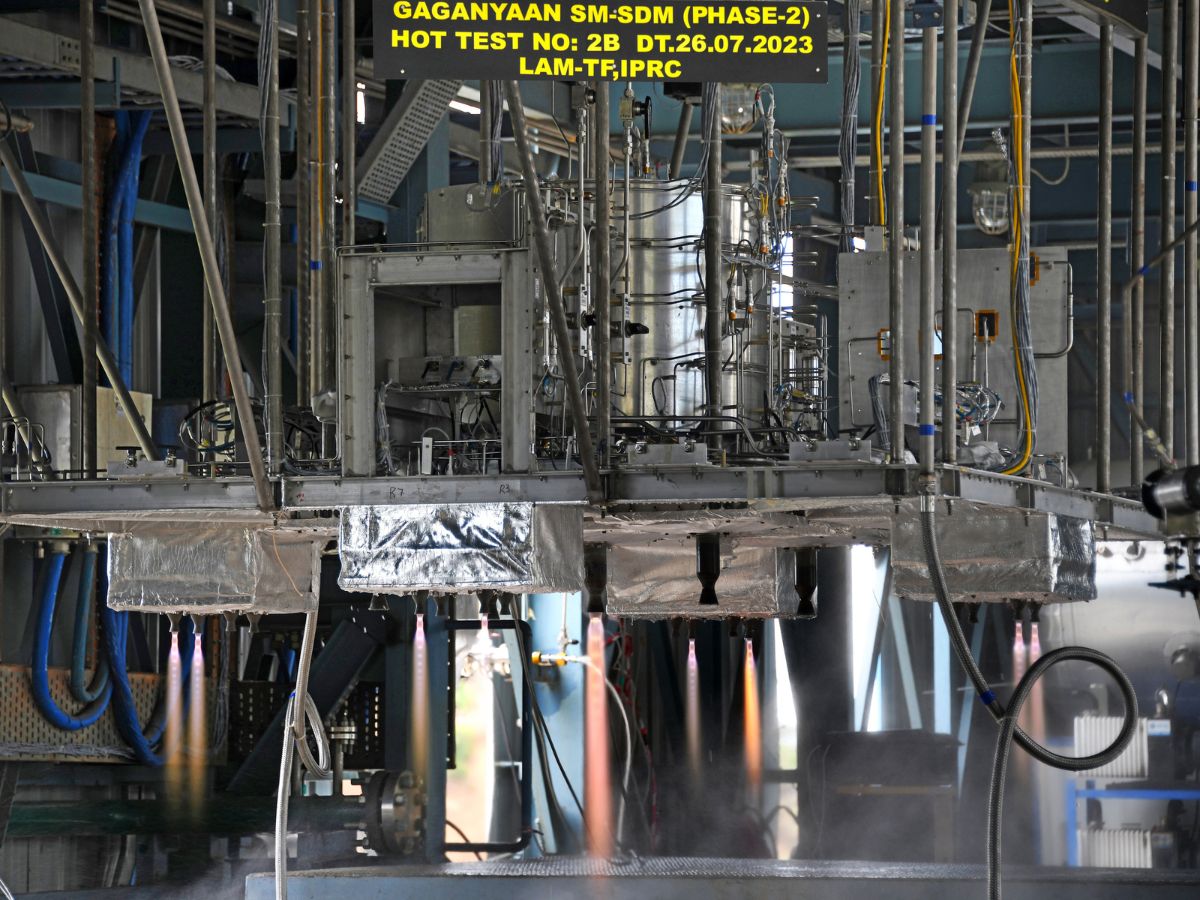
ISRO successfully tested the Gaganyaan Module Propulsion System (SMPS) on July 19, 2023, a feat important for the performance of the orbital module. The test was conducted at the ISRO Propulsion Complex in Mahendragiri, and involved five liquid apogee motor engines. Liquid apogee motor engines are chemical rocket engines used as the main engine in a spacecraft. Such an engine is controlled by two electrically-driven valves which provide thrust.
The five liquid apogee motor engines tested by ISRO were powered with a thirst of 440 Newtons. As many as 16 reaction control system thrusters were also tested. These had a thrust of 100 Newtons. A reaction control system enables a spacecraft to maintain attitude control and steering with the help of thrusters.
Gaganyaan’s service module will use two types of propellants. The service module will help the Gaganyaan spacecraft perform orbit injection and manoeuvres, and will allow the mission to be aborted in case of any mishap during the ascent phase.
The service module will receive the main propulsion force during the ascending phase with the help of the liquid apogee motor engines.
PSLV-C56/DS-SAR

ISRO launched the PSLV-C56 mission, the Indian space agency’s 90th mission, on July 30, 2023, at 6:30 am IST. PSLV blasted off into space with seven Singaporean satellites, including DS-SAR, the primary satellite for the mission. Therefore, the PSLV-C56 mission is also known as the DS-SAR mission. The satellites were launched from First Launch Pad, Satish Dhawan Space Centre, Sriharikota, Andhra Pradesh. The mission was performed in collaboration with NSIL.
PSLV-C56, the 58th flight of the PSLV, injected the seven satellites into a 535-kilometre circular orbit, and at an inclination of five degrees.
DS-SAR is a 360-kilogram satellite. Six co-passenger satellites were launched atop PSLV-C56. These were: Velox-AM, ARCADE, SCOOB-II, NuLIoN, Galassia-2, and ORB-12 Strider. ARCADE stands for Atmospheric Coupling and Dynamics Explorer.
DS-SAR consists of a synthetic aperture radar payload developed by Israel Aerospace Industries. The function of the synthetic aperture radar is to monitor the weather the entire day, and capture images at one-metre resolution. These satellite images will serve the purposes of different agencies within the Government of Singapore. Meanwhile, ST Engineering, a Singaporean engineering and technology group, will use the DS-SAR satellite to provide geospatial services to commercial customers.
According to ISRO, Velox-AM is a 23-kilogram microsatellite which will be launched with the purpose of technology demonstration; ARCADE is an experimental satellite; SCOOB-II is a nanosatellite and will be used for technology demonstration; NuLIoN is an advanced nanosatellite that will enable seamless “Internet of Things” connectivity in urban and remote locations; Galassia-2 is a nanosatellite that will orbit Earth at low-Earth orbit; and ORB-12 Strider is a satellite developed as part of an international collaboration.
Gaganyaan Drogue Parachute Tests
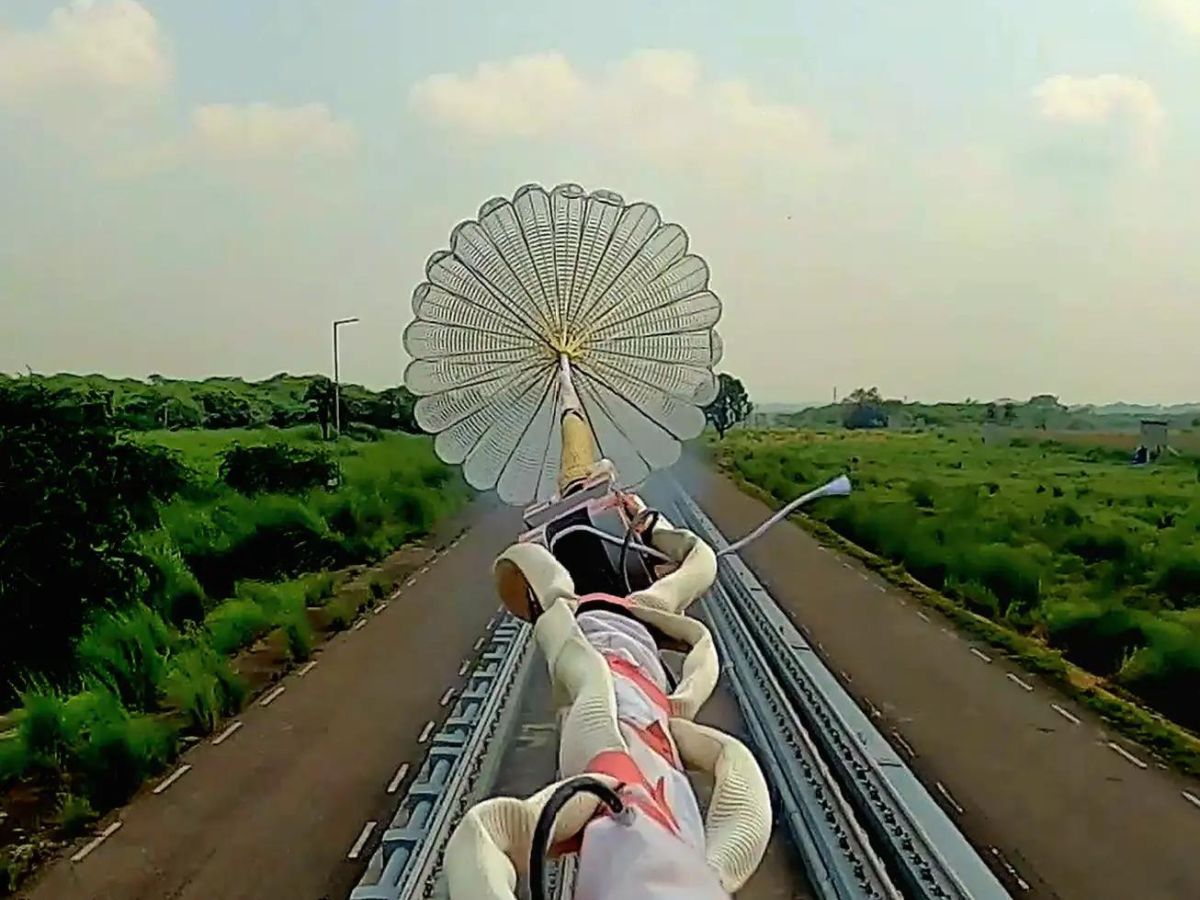
ISRO has successfully performed a series of three drogue parachute deployment tests for the Gaganyaan mission. The tests were conducted by the Vikram Sarabhai Space Center (VSSC), ISRO, at the rail track rocket sled facility of the Terminal Ballistics Research Laboratory in Chandigarh, from August 8 to 10, 2023. ISRO conducted the tests in collaboration with Serial Delivery Research and Development Establishment (ADRDE), DRDO.
Complex testing methods such as those performed at the rail track rocket sled are meant to test the performance of the small parachutes of the Gaganyaan programme. A rocket sled is a test platform that slides along a set of rails, propelled by rockets, and provides a controlled environment for high-velocity impact, aerodynamic and acceleration tests for articles such as payloads, aircraft and missiles, among others.
Drogue parachute deployment tests are important because these help determine whether the drogue parachutes are functioning properly. Drogue parachutes play an important role in stabilising the crew module and reducing its velocity to a safe level before atmospheric re-entry, and have been designed in a way such that they will be ejected into the air upon command.
Drogue parachutes consist of pyro-based devices known as mortars. These devices have pyrotechnic cartridges, which contain explosive substances and are intended to perform an initiation.
Drogue parachutes are placed inside deployment bags, which are stored in mortar tubes. The mortar tubes have an assembly containing pyrotechnic cartridges. These cartridges can be activated electrically to facilitate the ejection of drogue parachutes.
Drogue parachutes have a smaller surface area than conventional parachutes in order to reduce air drag, and hence, are best for deceleration.
Aditya-L1
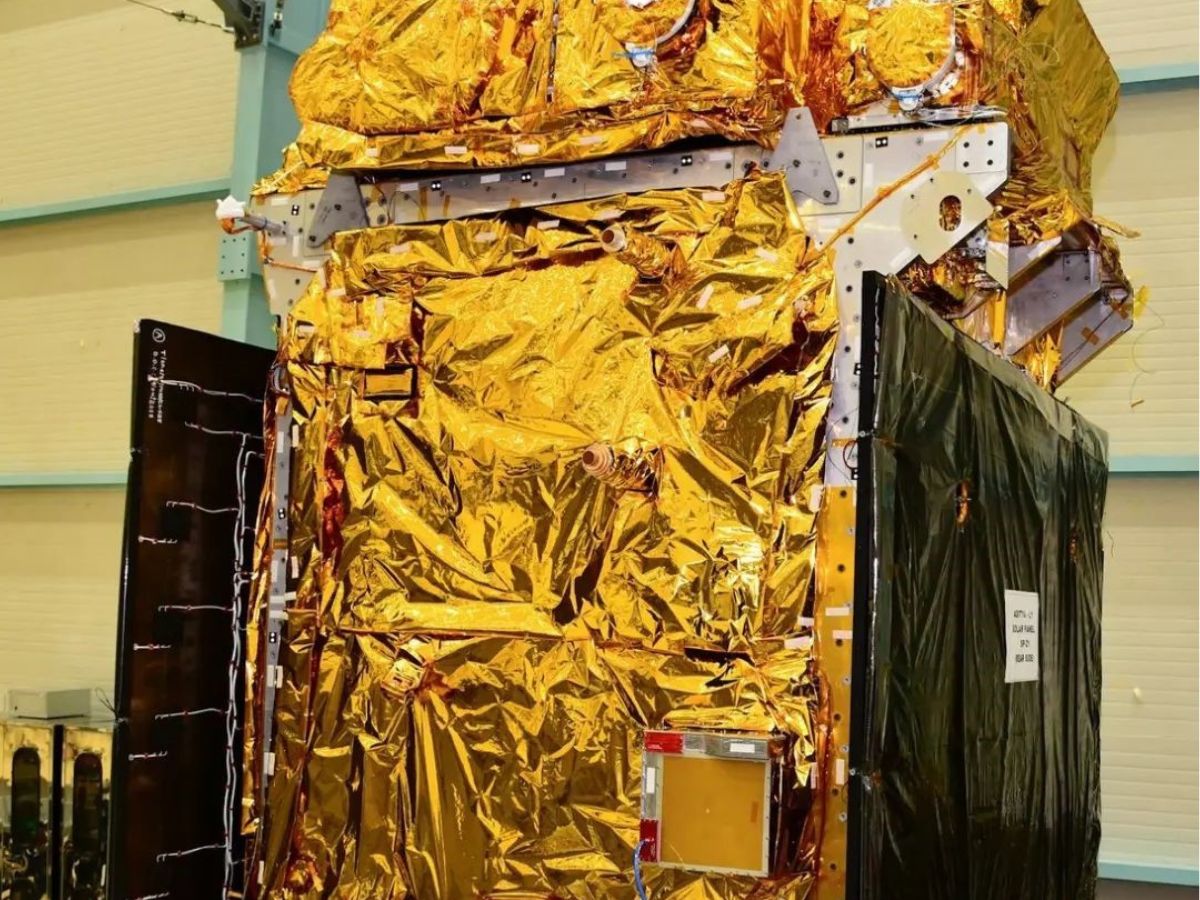
ISRO launched Aditya-L1 on September 2, 2023, at 11:50 am IST. Aditya-L1 took off atop a PSLV-XL rocket, from Satish Dhawan Space Centre, Sriharikota. This was the second launch from the Second Launch Pad at Satish Dhawan Space Centre. Also known as PSLV-C57, the mission marked the 59th flight of PSLV.
Aditya-L1’s journey towards the Sun will be a complex one, and will involve multiple phases. The spacecraft will reach its final destination about 125 days from launch.
Aditya-L1 will study the Sun because understanding the only star in the solar system will help scientists know more about other stars in the Milky Way galaxy.
Aditya-L1’s final destination is a halo orbit around Lagrange point 1 (L1), which is located 1.5 million kilometres from Earth. This is approximately one per cent of the distance between the Sun and the Earth, which is 150 million kilometres. Therefore, Aditya-L1 will be located about 148.5 million kilometres from the Sun.
Lagrange points are special points in space where the gravitational forces exerted by large masses are balanced, as a result of which the spacecraft placed in the vicinity of that region can save energy by using minimal fuel. There is an equilibrium because the gravitational forces exerted by the two large bodies will be equal to the centripetal force required by a small object to move with those bodies.
This means that at L1, the gravitational forces exerted by the Sun and the Earth will be equal to the centripetal force required by Aditya-L1 to move with the Sun and the Earth. As a result, the forces will be balanced, and Aditya-L1 will simply hover in the halo orbit, causing it to save fuel.
Another huge advantage of L1 is that when placed there, Aditya-L1 will not witness any eclipses or occultations. As a result, the solar observatory will have an uninterrupted view of the Sun for the entirety of its mission life, which is five years.
A halo orbit is neither circular or elliptical, but is stretched on both sides. The distance between the farthest points is 13 lakh kilometres.
The spacecraft is equipped with seven payloads, which are of two types: remote sensing and in-situ instruments. There are four remote sensing payloads and three in-situ payloads. The remote sensing payloads are spectroscopes, while the in-situ payloads include two particle analysers and one magnetometer.
Aditya-L1 will study the mechanisms occurring in the different layers of the solar atmosphere, the dynamics of coronal mass ejections and solar flares, the composition of coronal plasma, the effect of solar activities on space weather in real time, the energies of solar winds in different directions, and how solar particles affect the interplanetary medium.
Gaganyaan TV-D1
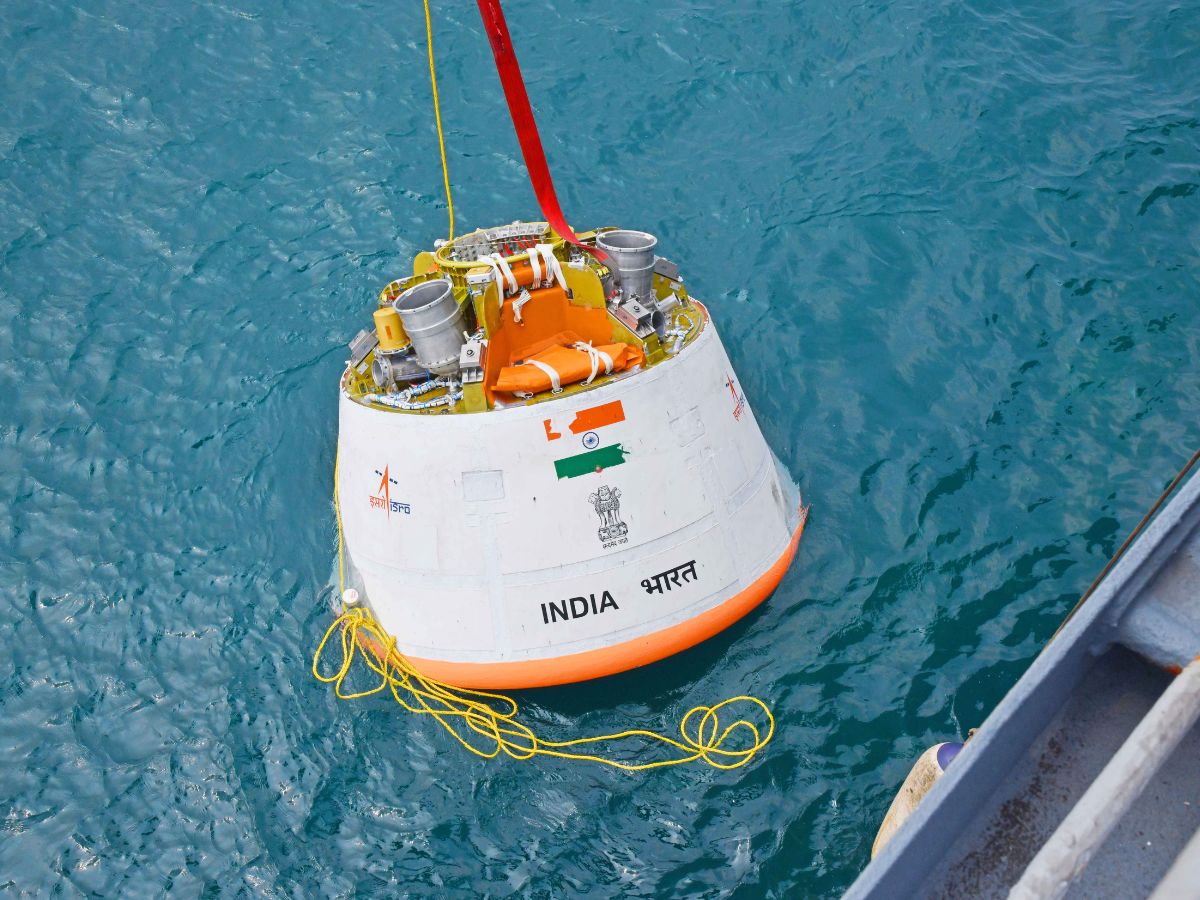
ISRO launched the first uncrewed flight mission of the Gaganyaan programme on October 21, 2023, at 10:00 am IST. Known as the Test Vehicle Development Flight (TV-D1) or Test Vehicle Abort Flight, the mission, carrying an uncrewed Crew Module and a Crew Escape System, took off from the First Launch Pad at Satish Dhawan Space Centre, Sriharikota, Andhra Pradesh. Gaganyaan TV-D1 is an important mission because it demonstrated the performance of the Crew Escape System, and is the first mission of Gaganyaan’s uncrewed flight tests.
An in-flight abort of the Crew Escape System was demonstrated, which means that while the Crew Module was in the air, the Crew Escape System was jettisoned. This allowed ISRO to check certain flight parameters, and whether the Crew Escape System can be effectively separated from the Crew Module to save the lives of astronauts in case a mishap occurs. ISRO aims to conduct more test flight missions in the future.
ISRO aborted the TV-D1 mission at Mach number 1.2, which means that at the time of abort, the speed of the Crew Module was 1.2 times the speed of the sound in air.
The reason why ISRO aborted the TV-D1 mission at Mach number 1.2 is that it is at this stage that the spacecraft is expected to experience the greatest challenge, in terms of vibration and other parameters. Therefore, if any anomalies are likely to occur, they will probably occur at this stage.
Mach number 1.2 is about 360 metres per second. Once the Crew Module achieved this speed, the abort command was given. The role of the Crew Escape System was to safely pull out the Crew Module from the launch vehicle, so that the Crew Module and the Crew Escape System could go in a direction different from that of the launch vehicle.
As part of the TV-D1 mission, the subsystems of the test vehicle were also evaluated. The deceleration systems of the Crew Module were tested at higher altitudes.
For this mission, an unpressurised Crew Module was used, unlike the crewed mission of the Gaganyaan programme, in which a pressurised crew module will be used. Both the pressurised and unpressurised versions have the same mass and size, and are equipped with the same systems for deceleration and recovery, including complete sets of parachutes.
In the crewed flight test of Gaganyaan, Earth-like atmospheric pressure conditions will be simulated.
The Crew Module successfully splashed down in the Bay of Bengal.
[ad_2]
Source link